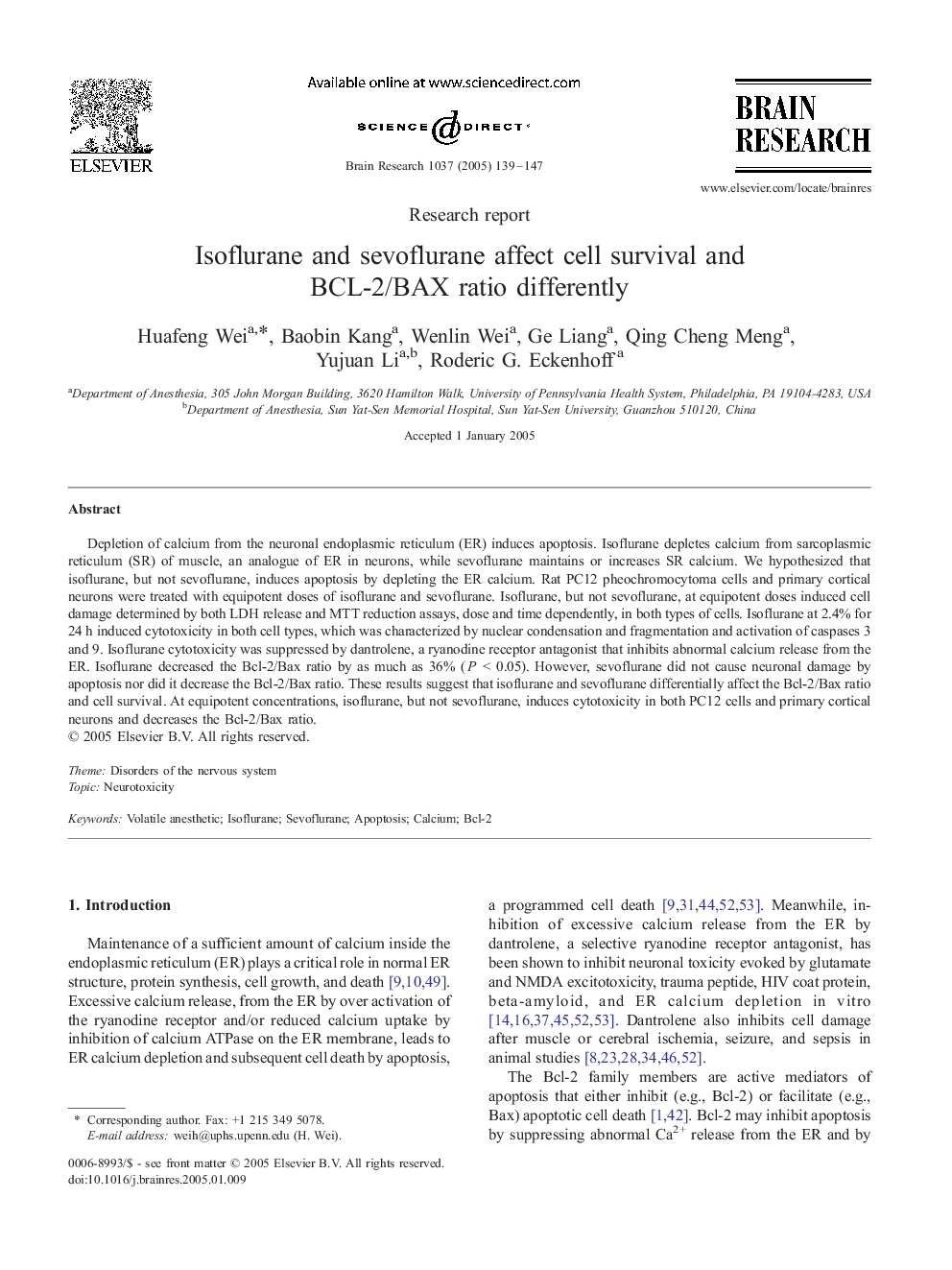| Article ID | Journal | Published Year | Pages | File Type |
|---|---|---|---|---|
| 9416648 | Brain Research | 2005 | 9 Pages |
Abstract
Depletion of calcium from the neuronal endoplasmic reticulum (ER) induces apoptosis. Isoflurane depletes calcium from sarcoplasmic reticulum (SR) of muscle, an analogue of ER in neurons, while sevoflurane maintains or increases SR calcium. We hypothesized that isoflurane, but not sevoflurane, induces apoptosis by depleting the ER calcium. Rat PC12 pheochromocytoma cells and primary cortical neurons were treated with equipotent doses of isoflurane and sevoflurane. Isoflurane, but not sevoflurane, at equipotent doses induced cell damage determined by both LDH release and MTT reduction assays, dose and time dependently, in both types of cells. Isoflurane at 2.4% for 24 h induced cytotoxicity in both cell types, which was characterized by nuclear condensation and fragmentation and activation of caspases 3 and 9. Isoflurane cytotoxicity was suppressed by dantrolene, a ryanodine receptor antagonist that inhibits abnormal calcium release from the ER. Isoflurane decreased the Bcl-2/Bax ratio by as much as 36% (P < 0.05). However, sevoflurane did not cause neuronal damage by apoptosis nor did it decrease the Bcl-2/Bax ratio. These results suggest that isoflurane and sevoflurane differentially affect the Bcl-2/Bax ratio and cell survival. At equipotent concentrations, isoflurane, but not sevoflurane, induces cytotoxicity in both PC12 cells and primary cortical neurons and decreases the Bcl-2/Bax ratio.
Keywords
Related Topics
Life Sciences
Neuroscience
Neuroscience (General)
Authors
Huafeng Wei, Baobin Kang, Wenlin Wei, Ge Liang, Qing Cheng Meng, Yujuan Li, Roderic G. Eckenhoff,
